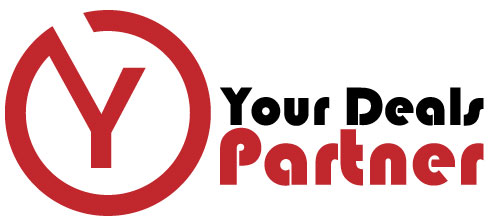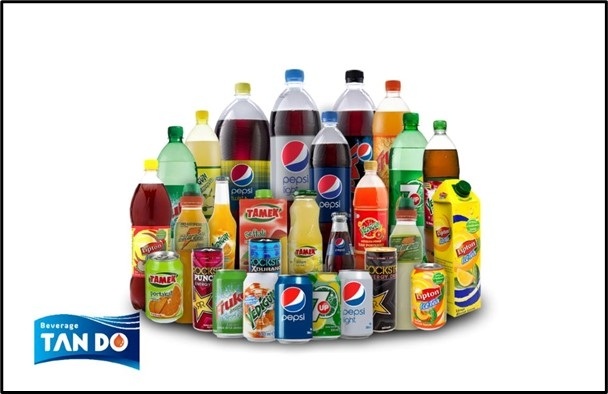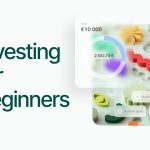The beverage industry, essential to meeting daily human needs, has experienced significant growth in market value. Understanding this dynamic sector is vital for industry players.
This report provides a comprehensive overview of global beverage manufacturing, sales, and consumption trends. It also includes key data on market size and competitive landscape, helping beverage businesses develop informed and effective strategies.
Overview of the beverage industry insights
The food and beverage sector plays a vital role in fulfilling everyday human needs.
It’s important to note that beverage service outlets—such as milk tea shops and coffee chains—fall under the food and beverage service industry, which is not included in the scope of this beverage industry report.
Broadly, the beverage industry is divided into two main segments:
Non- Alcoholic beverage industry insights
Non-alcoholic beverages include products that contain no alcohol, such as soft drinks, juices, tea, coffee, energy drinks, bottled water, and functional drinks. In 2023, the global non-alcoholic beverage market was valued at approximately $1,223.93 billion USD.
These beverages play a key role in daily hydration and refreshment, making them essential to modern lifestyles. From bottled water to juices and carbonated drinks, their popularity continues to grow across the globe, with billions of people consuming them daily to stay energised and quench their thirst.

Alcoholic beverages industry insights
Alcoholic beverages are drinks that contain alcohol, including beer, wine, spirits (such as vodka, whiskey, and rum), and liqueurs. These beverages are produced through fermentation (beer and wine) or distillation (spirits). In 2023, the global alcoholic beverages market was valued at approximately $2,313.2 billion USD.
While global consumption continues to rise, particularly in Southeast Asian countries like Vietnam, China, and India—where growth ranged from 11.3% to nearly 90%—some developed nations have seen a decline. Countries such as Australia, Canada, and the United Kingdom reported decreases in per capita consumption, with drops of 14.4%, 10.8%, and 7.3% respectively.

Impact of the COVID-19 Pandemic on the Beverage Industry
At the onset of the COVID-19 pandemic, the beverage industry faced major challenges, including a sharp decline in overall consumption and widespread disruption of supply chains. While in-home consumption saw a noticeable increase, out-of-home consumption — which typically yields higher profit margins — dropped dramatically.
Restaurants, a major distribution channel for beverages, were severely impacted. Many experienced a dramatic fall in revenue, with some only managing to earn about 20% of their usual sales through takeout and delivery services. It’s estimated that nearly one-third of food and beverage businesses shut down during the pandemic period.
Despite these setbacks, at-home consumption trends sparked a surge in demand for ready-to-drink beverages. This segment played a key role in offsetting some losses by driving global beverage sales upward during lockdowns and social distancing measures.

The biggest Beverage Industry Segments
The beverage industry offers an extensive variety of products, catering to consumers of all ages, preferences, and health conditions. This diversity allows the market to be segmented in multiple ways.
Here’s a breakdown of the major segments within the beverage industry:
Alcoholic Beverage Industry Insights
Beer
As of 2023, the global beer market reached a value of approximately 649.63 billion. Looking ahead, it is expected to grow steadily, reaching nearly 847.65 billion by 2032, with a projected compound annual growth rate (CAGR) of 3% during the 2024–2032 period.

Emerging markets and developing countries are key drivers of growth in the global beer industry:
– Nations like China, Canada, and Germany are seeing increasing acceptance of beer as part of daily life and special occasions, fueled by shifting lifestyles and economic development.
– The expansion of the middle class and urban populations in these regions has led to greater disposable income, boosting demand for beer.
– To capitalise on this opportunity, major beer companies are investing heavily—acquiring or partnering with local breweries, expanding distribution channels, and tailoring offerings to regional preferences.
– Additionally, the craft beer trend is gaining traction, especially among younger consumers who are drawn to its variety of flavours and unique styles.
Wine
In 2023, Expert Market Research estimated the global wine market to be worth $ 428.96 billion. It is projected to grow at a CAGR of 6.20737.13 billion by 2032.

As the leading segment with the largest market share in alcoholic beverages, the wine industry confidently drives strong profit margins.
Key factors fueling its growth include the rise of low-ABV drinks popular among working professionals and the increasing trend of socialising over alcohol.
Spirits
The global spirits market was valued at approximately 59.4 billion in 2023. It is projected to grow at a compound annual growth rate (CAGR) of nearly 490.3 billion in sales worldwide by 2033.

The primary driver is the rising demand for premium alcoholic beverages fueled by increased consumer spending. Additionally, the growing popularity of bars, pubs, hotels, and restaurants serving alcohol is expected to further boost spirits sales.
Non-alcoholic Beverage Industry Insights
Juice
The juice market is projected to grow from an estimated $137.9 billion in 2024 to $168.4 billion in 2030.

This growth is driven by increasing consumer demand for healthier drinks and the rising popularity of cold-pressed juices. Trends toward healthier diets and organic products have significantly propelled the industry in recent years.
Bottled Water
Let’s look at two tables of sales below:

Bottled water has seen the most significant growth. It plays a crucial role in disaster-affected areas and serves as a reliable, safe drinking option for travellers. This importance is why bottled water holds a dominant share of the market.
Soft Drink
In 2023, the global market for carbonated soft drinks was valued at approximately 604 billion. Forecasts predict it will grow at a CAGR of 4.18872.8 billion.

In contrast, the non-carbonated drink market is expected to grow from 335.60 billion in 2024 to 514.96 billion by 2030, with a projected CAGR of 7.11% between 2022 and 2027. This growth is fueled by millennials’ preference for soft drinks and increased R&D investment in the food and beverage industry.
Coffee
Mordor Intelligence estimates the coffee market to be valued at 132.13 billion, with a projected CAGR of 4.72166.39 billion.

With more people embracing coffee culture, global demand for coffee keeps increasing.
Tea
According to Mordor Intelligence, the global tea market was valued at 12.63 billion in 2023 and is projected to grow at a CAGR of 5.517.41 billion by 2029.

This growth is driven by the health benefits associated with tea, increasing consumer awareness about the downsides of carbonated beverages, and a rising preference for natural ingredients.
How competitive is the beverage industry?
In general, is the competition in the beverage industry high?
Yes, it is.
The simple reason is that every fertile land will attract a vast number of farmers. So does the profitable beverage industry.
The beverage industry is intensely competitive, fueled by constant innovation, evolving consumer preferences, and dynamic market positioning. Companies face several hurdles as they strive to capture and retain consumer interest. Here are four of the most significant challenges facing beverage brands today.
A growing number of start-ups
According to StartUs Insights, the food and beverage sector is highly saturated, with over 349,000 active companies listed in the database. Major global players like Nestlé, PepsiCo, Anheuser-Busch InBev, Heineken, and Coca-Cola continue to dominate and shape the industry.
At the same time, a wave of innovative startups is emerging, driving change through creativity and disruption. These newcomers are responsible for over 92,100 patents and more than 6,240 grants, highlighting their role in pushing the industry forward.
For new entrants, standing out in such a competitive landscape requires bold branding, a clear value proposition, and a commitment to innovation.
Changing consumer preferences
Adapting to Evolving Consumer Trends in the Beverage Industry
Today’s consumers are increasingly seeking beverages that are healthier, more sustainable, and packed with flavour. To stay competitive in this fast-moving market, brands must align with several key trends:
– Demand for Low- and Non-Alcoholic Beverages: There’s rapid growth in alcohol-free options like non-alcoholic wine, kombucha, craft beers, and hard seltzers, driven by health-conscious lifestyles.
– Shift Away from Sugary Drinks: More consumers are avoiding beverages with added sugars, creating opportunities for naturally sweetened or sugar-free options.
– Focus on Premium Ingredients and Unique Flavours: Shoppers now prioritise quality, originality, and experience, pushing brands to innovate with artisan recipes and premium components.
– Rise of Functional Beverages: Drinks fortified with vitamins, antioxidants, probiotics, and other health-boosting ingredients are seeing strong market traction.
– Sustainability Matters: Eco-conscious
Supply chain complexities
Key Supply Chain Challenges in the Global Beverage Industry
The global beverage industry faces several complex supply chain challenges that can impact product availability, cost, and quality. Here’s what brands need to navigate:
– Seasonality & Local Sourcing: Ingredients like fruits, herbs, and vegetables are often seasonal and location-dependent, leading to price volatility and potential shortages throughout the year.
– Food Safety & Quality Assurance: Maintaining consistent quality control and product safety is essential. Any contamination or product recall can damage consumer trust and harm a brand’s reputation.
– Rising Transportation & Storage Costs: The industry is heavily impacted by increasing fuel prices, specialised cold chain logistics, and complex warehousing needs.
– Demand Fluctuations & Scarcity: With unpredictable consumer demand and global disruptions, companies must remain agile to avoid stockouts or overproduction.
To stay competitive, beverage companies must adopt resilient supply chain strategies, invest in sustainable sourcing, and ensure efficient logistics.

Environmental concerns
When selecting beverages, consumers give sustainability a top priority. Because of this, brands need to create eco-friendly projects.
- Ensuring the ethical and ecologically sustainable sourcing of raw materials.
- Economical use of resources during manufacturing.
- Reducing trash and encouraging recycling.
- To overcome these problems, brands must engage in strategic planning, be innovative, and have a profound awareness of the industry dynamics.
Top 5 Biggest beverage companies in the world
With their vast product lines and presence on a global scale, these corporations have a dominant position in the beverage industry everywhere.
Anheuser-Busch InBev (AB InBev)
Anheuser-Busch InBev: The World’s Leading Beverage and Brewing Company
Anheuser-Busch InBev (AB InBev) is a Belgian-Brazilian multinational beverage giant headquartered in Leuven, Belgium. As the largest beverage company globally by revenue—reporting $59 billion USD in 2023—AB InBev leads the alcoholic beverage industry with unmatched scale and influence.
Producing over 595 million hectoliters of beer annually, AB InBev is recognised as the world’s largest brewer. The company boasts a diverse portfolio of more than 500 popular beer brands, including global names like Budweiser, Stella Artois, Corona, and Beck’s, along with many strong regional favourites.
Driven by a passion for brewing, AB InBev continues to innovate and shape the global beverage landscape by delivering high-quality products and memorable consumer experiences. Its commitment to sustainable brewing, brand excellence, and global expansion makes it a key player in the competitive beverage market.

The Coca-Cola Co.
The Coca-Cola Company: Global Leader in Non-Alcoholic Beverages
Founded in 1892, The Coca-Cola Company is a U.S.-based multinational corporation and the largest non-alcoholic beverage company in the world by revenue, earning $45.754 billion USD in 2023. Headquartered in Atlanta, Georgia, Coca-Cola is known worldwide for its iconic soft drink brands and extensive product lineup.
The company produces, markets, and distributes a wide range of non-alcoholic beverages, including carbonated soft drinks, juices, teas, sports drinks, water, and beverage concentrates and syrups. While the flagship Coca-Cola drink remains a household name, the company also owns popular brands like Sprite, Fanta, Dasani, Minute Maid, and Powerade.
With products sold in over 200 countries and territories, Coca-Cola continues to dominate the global beverage industry through strategic marketing, strong brand identity, and a commitment to sustainability and product innovation.

Nestlé SA
Nestlé SA: Global Beverage Industry Leader Focused on Nutrition and Sustainability
Nestlé SA, a Swiss multinational food and beverage company headquartered in Vevey, Switzerland, stands as one of the largest beverage companies in the world. In 2023, Nestlé’s beverage divisions—including coffee, water, and dairy-based drinks—generated nearly $40 billion USD in revenue.
With operations in over 70 countries, Nestlé offers a diverse portfolio of popular beverage brands that cater to a wide range of consumer preferences. Iconic names include Nescafé, Nespresso, Milo, Nestea, and Pure Life, spanning categories such as coffee, tea, dairy drinks, bottled water, and health-focused beverages.
Nestlé is deeply committed to nutrition, sustainability, and building regenerative food systems. The company integrates environmental responsibility and social impact into its beverage production and supply chains. Its mission to enhance quality of life and contribute to a healthier future positions Nestlé as a global leader in the evolving beverage industry.

PepsiCo Inc.
PepsiCo: Global Beverage Industry Giant with a Focus on Innovation and Sustainability
PepsiCo, an American multinational food and beverage company headquartered in Harrison, New York, is a major player in the global beverage market. In 2023, PepsiCo’s net beverage revenue reached $37 billion USD, accounting for 41% of its total earnings.
PepsiCo boasts a diverse beverage portfolio featuring iconic brands such as Pepsi-Cola, Mountain Dew, Gatorade, Tropicana, 7UP, and SodaStream. The company serves a wide range of markets, offering carbonated soft drinks, energy drinks, sports beverages, and flavoured water products to meet evolving consumer preferences.
PepsiCo is also recognised for its strong commitment to sustainability, inclusion, and community engagement. Through eco-friendly packaging, water conservation efforts, and reduced sugar innovations, PepsiCo continues to lead the way in creating a healthier and more sustainable beverage industry.

Heineken NV
Heineken: A Global Leader in the Alcoholic Beverage Industry
Heineken, a Dutch multinational brewing company founded in 1864 by Gerard Adriaan Heineken in Amsterdam, is a major force in the global alcoholic beverage market. Employing around 85,000 people worldwide, Heineken reported a revenue of €30 billion in 2023.
As the number one brewer in Europe and one of the largest brewers globally by volume, Heineken continues to shape the beer industry with its extensive portfolio. The company operates over 165 breweries across more than 70 countries, producing a wide variety of 348 international, regional, local, and speciality beers and ciders.
Heineken’s commitment to quality, innovation, and sustainability solidifies its position as a top choice for beer lovers around the world.

These businesses are still influencing the beverage sector by adjusting to shifting consumer tastes and worldwide patterns.
Conclusion
Summary: A Promising Future for the Beverage Industry
Despite strong competition among its segments, the beverage industry remains a high-potential market with promising growth opportunities. This overview highlights key statistics on sales revenue, market share, and projected growth, providing a clear picture of current trends and future directions. Understanding these insights helps businesses meet consumer demands and deliver exceptional experiences.
About Tan Do: Trusted Global Beverage ODM/OEM Manufacturer
Tan Do, based in Vietnam, is a leading global beverage ODM/OEM manufacturer and supplier. Since 1996, we’ve earned trust and credibility both locally and internationally. Utilising cutting-edge technology, we have developed thousands of products that comply with ISO, HACCP, HALAL, FDA, and other global standards, ensuring quality and safety for our clients worldwide.


